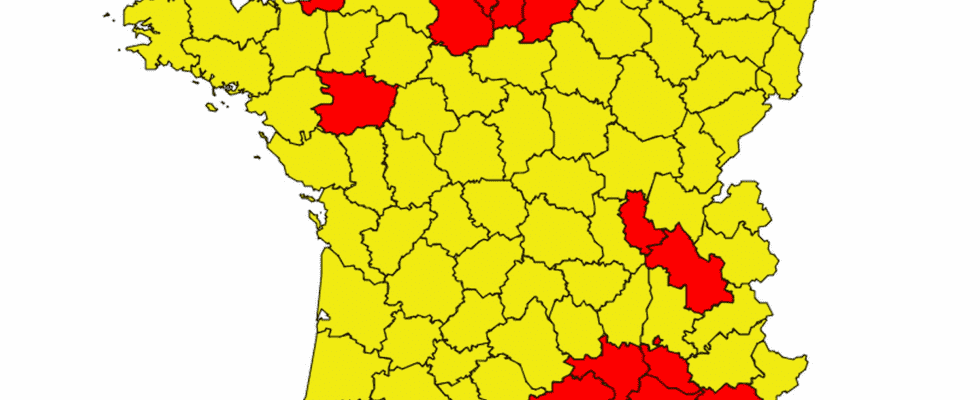FRENCH ALLERGY. Ash and cupressaceae pollens are dispersing over the territory at the end of March with the associated allergies. Birch pollens also unfold. What are the departments most affected at the moment in France? On alert ? Listing.
[Mis à jour le 28 mars 2022 à 18h13] In this end month of March, allergy sufferers must be prepared. Ash and cupressaceae pollen (including cypress) are the most widespread in France for a medium to high risk of allergy in Normandy and Isère announces the National Aerobiological Monitoring Network (RNSA) March 28. “Concentrations [des pollens de bouleau] are increasing day by day with an allergy risk already at a medium level in many departments of western France, as well as in the Paris and Lyon regions in particulart” adds the RNSA. The drop in temperatures in anticipation from Wednesday will however limit the latter. Allergic reactions to pollen from grasses will be felt weakly on the western side of the territory. The plane tree pollen will mainly focus on Mediterranean.
2022 pollen map: what risks by department?
List of departments where the risk of allergy is high : Manche (50), Calvados (14), Maine-et-Loire (49), Rhône (69), Isère (38), Hérault (34), Gard (30), Vaucluse (84), Bouches-du-Rhône (13) and Var (83), Oise (60), Val-d’Oise (95), Yvelines (78), Seine-et-Marne (77), Eure-et-Loir (28), Essonne (91) , Seine-Saint-Denis (93), Hauts-de-Seine (92), Val-de-Marne (94), Paris (75)
What advice in case of allergies?
The RNSA recommends that allergy sufferers:
- to follow their treatments and consult the doctor in case of symptoms,
- regularly consult the pollen vigilance map on the RNSA website
- rinse your hair at night,
- ventilate at least 10 minutes a day before sunrise and after sunset,
- avoid drying clothes outside,
- keep car windows closed to prevent pollen from entering the passenger compartment,
- avoid outdoor sports activities that lead to overexposure to pollen.
- Also beware of air pollution, which can exacerbate pollen allergies.
What are the differences between the symptoms of an allergy and Covid?
The priority for allergy sufferers, despite the coronavirus epidemic, is to maintain their background treatment to better control asthma and avoid complications. Caution of do not confuse the symptoms of Covid-19 and pollen allergy. As the RNSA reminds us, the dry cough or respiratory problems linked to asthma are indeed quite similar to those of the first symptoms of Covid-19 infection, but what makes the big difference for Covid-19 is flu syndrome (pain, body aches, fever). If in doubt, do not hesitate to consult your doctor or an allergist.
What pollens are present in France?

The pollen produced by the flowers is composed of tiny grains used for plant reproduction. The main manifestations of pollen allergy are allergic rhinitis (or allergic rhino-conjunctivitis), also called “hay fever”. It exists three main categories of pollen : tree pollens (birch, plane tree…), grasses (wheat, oats…) and herbaceous plants (nettle, ragweed…).
In France, the main plant species responsible for allergies are:
- grasses (April to July)
- birch (April, especially in northern France)
- the cypress (February to April)
- mugwort ragweed (August, September)
What are the symptoms of a pollen allergy?
A pollen allergy is manifested by several characteristic symptoms: itchy eyes, conjunctival redness, tearing, swollen and sticky eyelids, itchy nose, sometimes stuffy and with clear and repeated discharge. The plane tree pollens which are gaining ground throughout the country at the beginning of April are slightly allergenic but the micro-needles contained in the plane tree husks are very irritating and can scratch in the throat and make you cough.
In case of symptoms, do not hesitate to consult a doctor (general practitioner, allergist), rather by teleconsultation at the moment. The practitioner may consider the passage of allergological tests (skin tests or assays of immunoglobins E or IgE) in order to confirm the diagnosis and set up a treatment aimed at relieving the symptoms.
